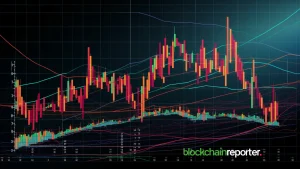
Introduction
The worldwide central banks have implemented diverse cutting-edge monetary policy mechanisms in recent years for economic growth and stability. Quantitative easing plays the role of one such tool, taking into account the wide-level financial asset buyouts to add liquidity to the economy. Nonetheless, with the recovery of the economies and an increase in inflation, the central banks time and again shift to quantitative tightening. This policy targets minimizing excess liquidity for control over inflation as well as the normalization of monetary conditions. The current article examines the dynamics of QT, its targets, as well as the substantial impact thereof on economic sectors.
What Quantitative Tightening?
Quantitative tightening offers a monetary policy mechanism that the central banks utilize to decrease the funds circulating across the economy. They often use this tool following a phase of quantitative easing in which central banks add funds to the economy. In the QE phase, central banks buy government bonds as well we the rest of the financial assets.
This increases the fund supply and decreases the interest rates, encouraging investment and borrowing. QT, on the other hand, does the opposite of this procedure by tightening the fund supply to avoid economic overheating. In addition to this, it also pays significant attention to controlling inflation.
Objectives of Quantitative Tightening
The chief targets of QT take into account the control over inflation as well as the normalization of monetary policy. The first one deals with the reduction in the fund supply and QT assists in calming down the overheating economy. The 2nd objective focuses on the central bank balance sheet. It returns the balance sheet of the central banks to a relatively typical composition and size.
The Working of Quantitative Tightening
Quantitative tightening comprises several mechanisms and steps that central banks leverage to lower the fund supply. These things include: ceasing purchases, permitting the maturation of securities, selling assets, as well as adjusting reserve interest.
I. Ceasing purchases
In the first step of QT, central banks stop buying new securities following the QE phase where they buy government bonds along with other assets.
II. Permitting the maturation of securities
Central banks reportedly hold diverse financial assets having pre-determined maturity dates. On the maturation of these securities, the central banks can reinvest in the latest securities to maintain the balance sheet. Otherwise, they can stop this to efficiently eliminate funds from circulation. When it comes to QT, they do not reinvest the respective proceeds. Rather, it permits the securities’ roll off from the balance sheet, gradually minimizing fund supply.
III. Selling assets
Some cases include the active selling of securities by the central banks from portfolios thereof to expedite the QT process. In this way, they can more rapidly decrease the balance sheet apart from the total fund supply.
IV. Modifying the reserves interest
Additionally, central banks can utilize the interest rates recompensed on reserves in the form of an instrument for QT. The increase in interest rates recompensed on the funds that are held by commercial banks at the central banks permits them to maintain reserves instead of ousting them. This also lowers the fund supply.
Quantitative Tightening’s Impact
Quantitative tightening can have a substantial effect on diverse economic aspects. They take into account economic growth, financial markets, and interest rates.
I. Interest rates
Quantitative tightening normally results in increased interest rates. While the central bank minimizes the securities holdings, the fund supply in the economy drops. This leads to a heightened borrowing cost. Loans become more expensive following the increase in interest rates, potentially paving the way for decreased investment.
II. Financial markets
QT influences the financial sphere by minimizing bong purchases. This reduces demand and elevates yields for government bonds as well as the rest of the fixed-income securities. Increased interest rates can cut stock prices while entities experience huge borrowing costs, likely lowering investment and profits. Moreover, the transformation of QT after QE can increase market volatility while investors adapt to the latest economic conditions.
QT’s Impact on Crypto Markets
Quantitative Tightening’s likely impact on the crypto markets has been getting a lot of attention. The following are the factors which QT can influence:
I. Market sentiment
Market sentiment plays a crucial role in the crypto sector. QT can develop an additionally risk-averse environment while the investors cautiously deal with tighter monetary surroundings and increased interest rates. This sentiment shift can increase volatility and drop crypto pressure.
II. Liquidity
QT lowers liquidity in the traditional financial system. While central banks retreat from adding funds to the economy, diverse asset classes possess less liquidity for investment. The decreased liquidity can result in minimized trading volumes as well as higher volatility in crypto markets.
III. Investment shifts
Heightened interest rates coming from Quantitative tightening can increase the attractiveness of conventional financial assets such as bonds in comparison with crypto and other riskier assets. Investors pursuing safe investments have the option to shift funds from crypto, potentially dropping crypto prices.
Conclusion
Quantitative tightening works as a vital tool for central banks to cope with fund supply and inflation control. By shrinking central banks’ balance sheets, they can affect interest rates, economic growth, and financial markets. Though QT targets establishing a stable and balanced economic environment, it can massively impact diverse markets including crypto.
While exploring the complicated QT process, central banks should sensibly organize policy execution and community to decrease market disruptions. This will guarantee a smooth transition from QE’s comprehensive monetary policies.
Frequently Asked Questions
What is Quantitative Tightening (QT)?
Quantitative Tightening (QT) is a monetary policy tool used by central banks to reduce the amount of money circulating in the economy. It is typically employed after a period of Quantitative Easing (QE), where central banks increase the money supply by purchasing government bonds and other financial assets. In contrast, QT aims to decrease the money supply to control inflation and normalize monetary conditions.
What are the objectives of Quantitative Tightening?
The primary objectives of QT are to control inflation and normalize monetary policy. By reducing the money supply, QT helps to cool down an overheating economy. Additionally, it aims to return the central bank's balance sheet to a more typical composition and size, aligning with pre-QE levels.
What impact does Quantitative Tightening have on the economy?
QT can lead to higher interest rates as the money supply decreases. This makes borrowing more expensive, potentially slowing down investment and economic growth. Financial markets may experience increased volatility due to the reduced liquidity and higher yields on government bonds. In the cryptocurrency market, QT can lead to decreased liquidity, higher volatility, and reduced trading volumes as investors may shift towards traditional assets perceived as safer during periods of tightening.








